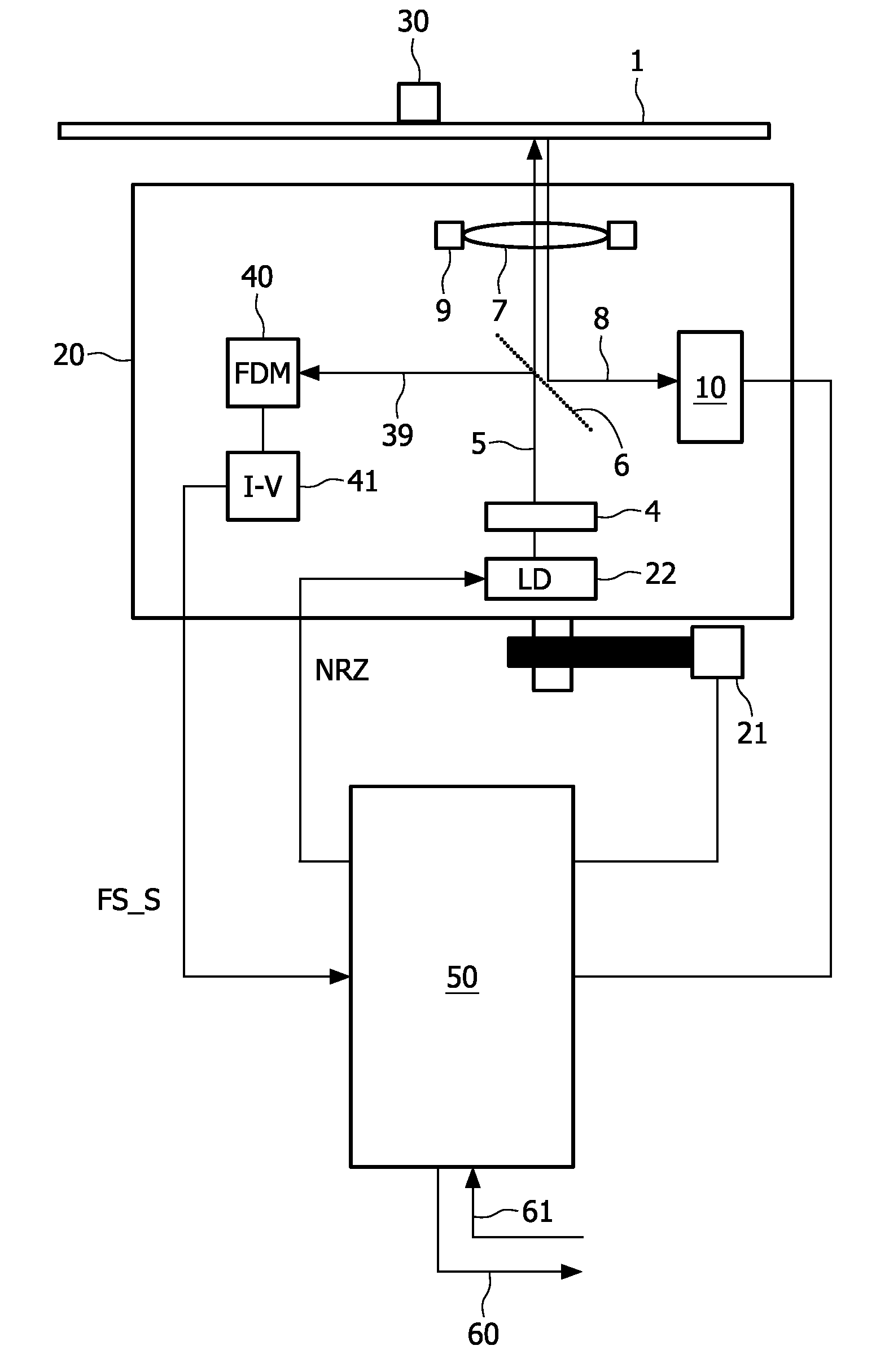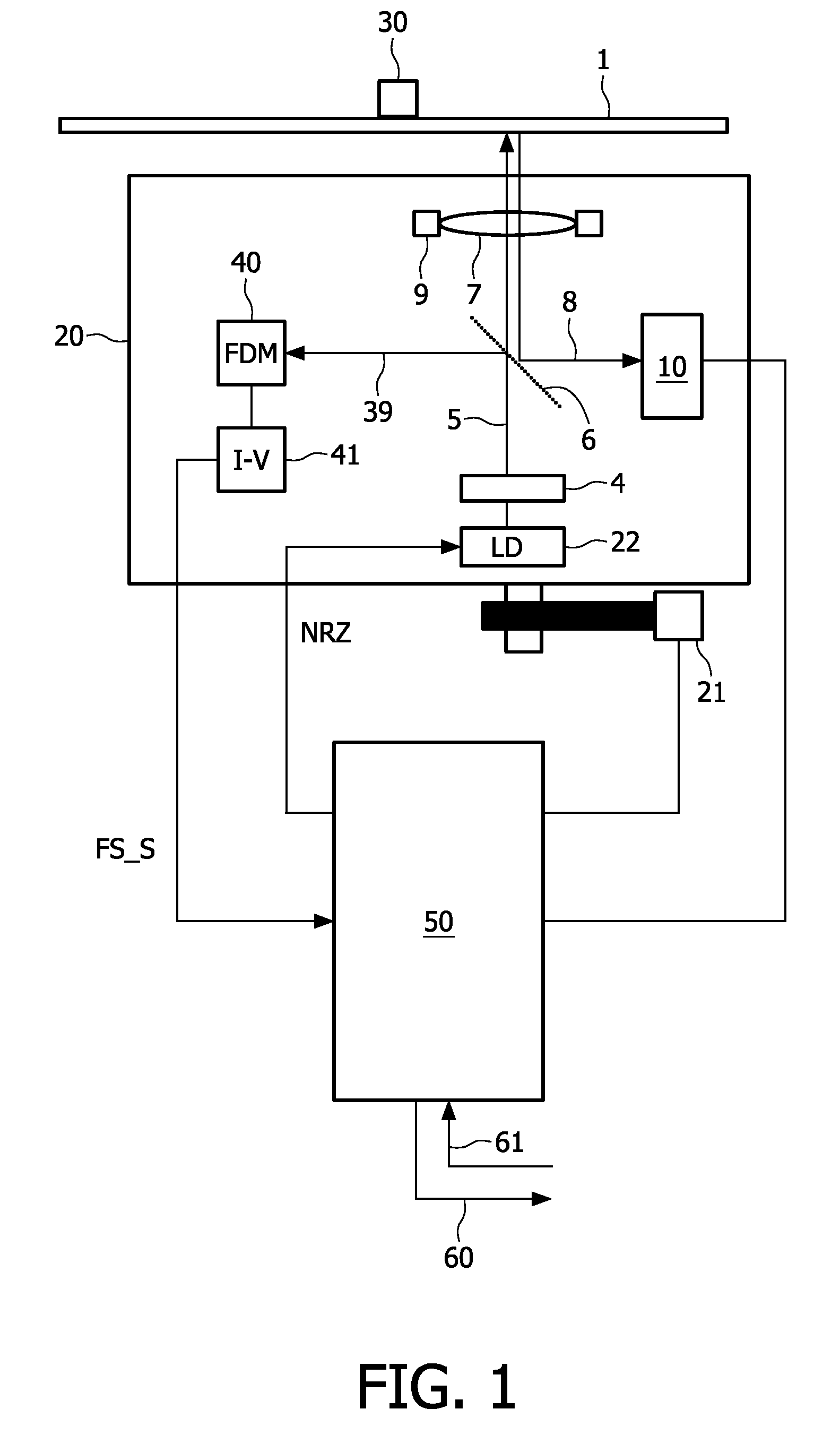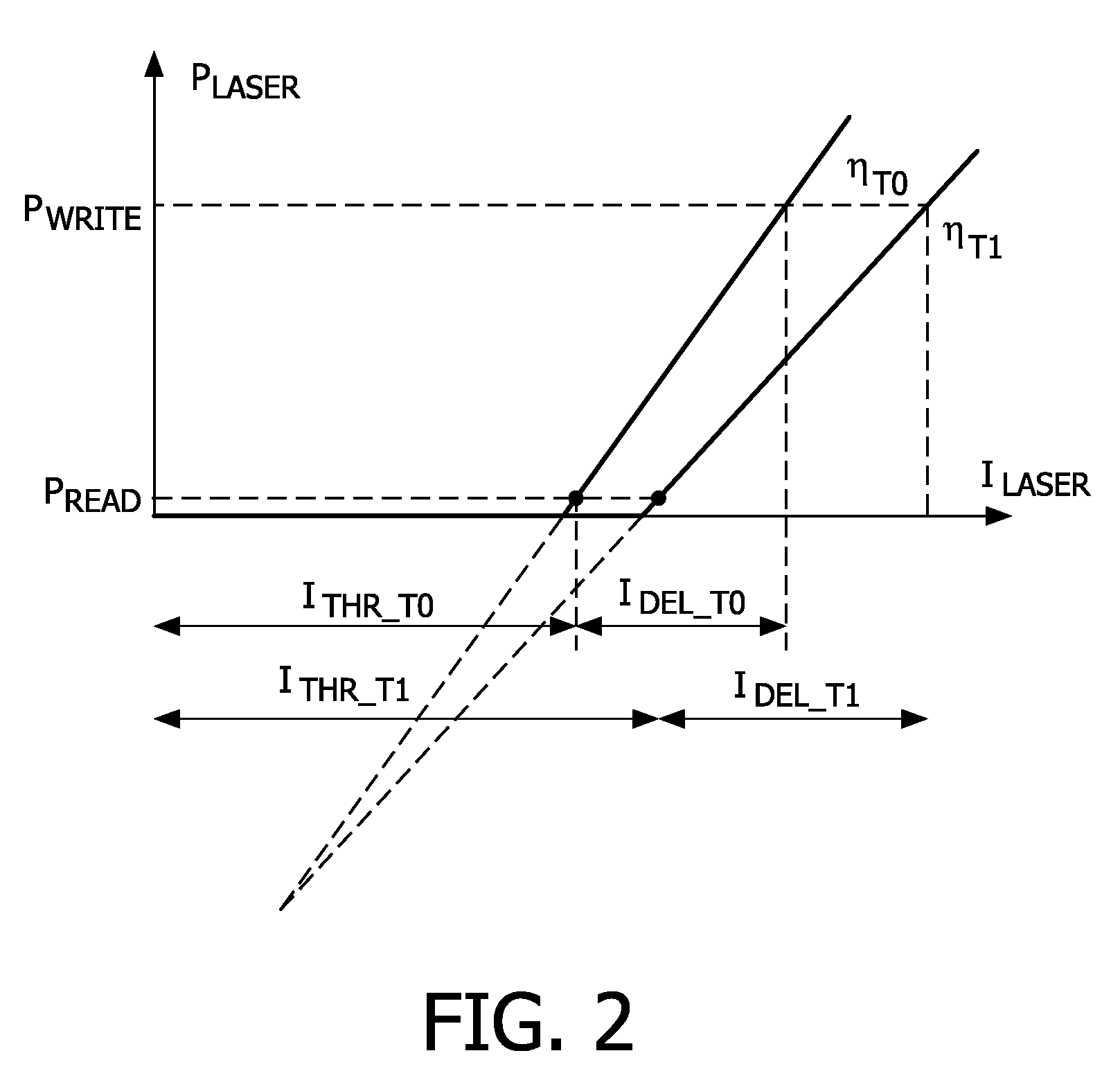Optical drive with improved laser power control (LPC)
a technology of optical drive and laser power control, which is applied in the direction of optical beam sources, recording signal processing, instruments, etc., can solve the problems of not being able to continuously monitor the actual laser, not being able to achieve the stability and efficiency of forward sense control, etc., to facilitate the implementation of a write strategy and reduce the time spent on re-calibration
- Summary
- Abstract
- Description
- Claims
- Application Information
AI Technical Summary
Benefits of technology
Problems solved by technology
Method used
Image
Examples
Embodiment Construction
[0048]FIG. 1 shows an optical recording apparatus or an optical drive and an optical carrier 1 according to the invention. The carrier 1 is fixed and rotated by holding means 30.
[0049]The carrier 1 comprises a material suitable for recording information by means of a radiation beam 5. The recording material may, for example, be of the magneto-optical type, the phase-change type, the dye type, metal alloys like Cu / Si or any other suitable material. Information may be recorded in the form of optically detectable regions, also called “marks” for rewriteable media, on the optical carrier 1.
[0050]The apparatus comprises an optical head 20, sometimes called an optical pick-up (OPU), the optical head 20 being displaceable by actuation means 21, e.g. an electric stepping motor. The optical head 20 comprises a photo detection system 10, a laser driver device 30, a radiation source 4, a beam splitter 6, an objective lens 7, and lens displacement means 9 capable of displacing the lens 7 both i...
PUM
 Login to View More
Login to View More Abstract
Description
Claims
Application Information
 Login to View More
Login to View More - R&D
- Intellectual Property
- Life Sciences
- Materials
- Tech Scout
- Unparalleled Data Quality
- Higher Quality Content
- 60% Fewer Hallucinations
Browse by: Latest US Patents, China's latest patents, Technical Efficacy Thesaurus, Application Domain, Technology Topic, Popular Technical Reports.
© 2025 PatSnap. All rights reserved.Legal|Privacy policy|Modern Slavery Act Transparency Statement|Sitemap|About US| Contact US: help@patsnap.com



